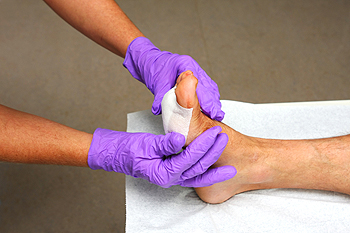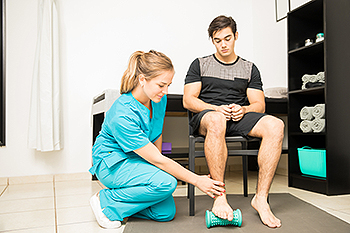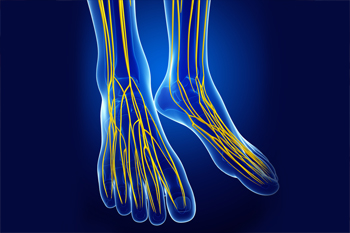
A wound is a break in body tissue that happens either internally or externally. A minor wound can be treated at home by cleaning it, followed by covering it with a dressing. Severe wounds can consist of an abrasion that can happen when the skin rubs against a hard surface. Road rash is an example of this type of wound, and infection may be prevented when it is cleaned. A needle or pointy object can cause a puncture wound, and may be well below the skin’s surface. Patients who are involved in serious accidents may experience an avulsion wound which can bleed heavy and fast. Wounds that occur on the feet are treated by a chiropodist, and it is suggested that you seek the counsel of this type of medical professional who can effectively treat foot wounds.
Wound care is the process of treating and preventing wounds on the feet. This is especially important if you have diabetes, as diabetic foot wounds are common and can lead to serious complications when left untreated. To learn more about proper wound care, please consult with one of the specialists from Thornhill Foot Clinic. Our chiropodists will assess your condition and provide you with quality foot and ankle treatment.
Why Is Wound Care Important for Diabetics?
While wound care is important for maintaining the health of your feet, it is especially important for people with diabetes. This is because diabetics often suffer from poor blood circulation, causing foot wounds to heal very slowly or not to heal at all. Diabetics also frequently suffer from neuropathy or nerve loss. This means no matter how big or little the wound, they might not feel it on their foot. If the wound becomes severely infected, amputation may be necessary. This is why it is imperative that diabetics complete daily foot checks.
Wound Care Basics
The best way to care for wounds is to prevent them in the first place. It is recommended that people with diabetes perform a daily examination of their feet to locate cuts, scrapes, sores, or wounds. Early detection allows for ample time to treat the wounds and prevent further complications. If you notice a wound at home, you can clean it using water, apply an antibiotic ointment, and cover the wound with a clean bandage. Seeing a chiropodist, who can examine your feet thoroughly and treat any existing wounds, can also help you maintain proper foot health.
If you have any questions, please feel free to contact our office located in . We offer the newest diagnostic and treatment technologies for all your foot care needs.





